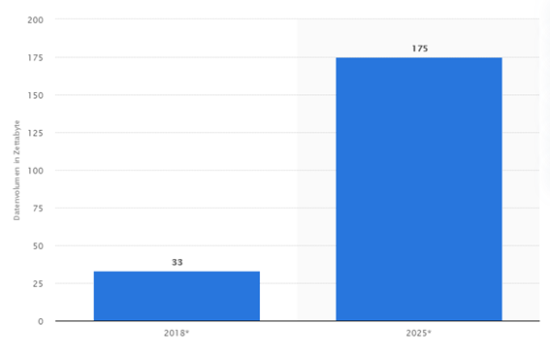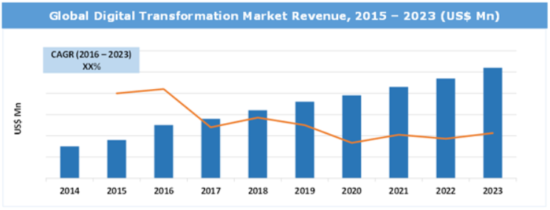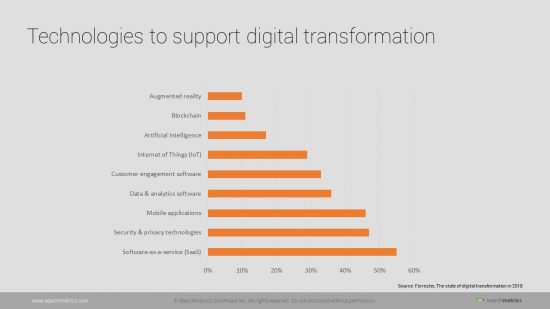Most companies have realized by now that they need to undergo a digital transformation if they wish to stay competitive. But many companies don’t know how to get their digital activities up and running successfully. In this article, I’ll outline eight common mistakes and the accompanying risks that companies undergoing digital transformation should be aware of.
The Searchmetrics Digital Strategies Group specializes in supporting the digital transformation of companies. Let our experts show you where your business is on the road to digitization:
Video: Digital Transformation: From Dinosaur to Unicorn
For all fans of video, here’s a recording of our first session on digital transformation. Björn Darko, former Director of Searchmetrics Digital Strategies Group, now VP Product at Searchmetrics, and I talked about the pitfalls of digital transformation and what companies need to know to implement successful digital transition:
The second session in this series recorded on January 17, 2019 is called “Pick your battles – stand out as a unicorn alongside the eCommerce giants”. Click here to watch the video:
What sectors are leading the field in digital transformation?
There is no one-size-fits-all solution when it comes to successfully transforming your business model from analog to digital. Much depends on your current strategy: How do you earn your income? Who are your customers and how do they get their information? How are your internal company structures set up?
While the right solution has to be specific to your business, the principles of digital transformation can be applied to any industry. This is also reflected in current statistics on market size, which show that global spending on the technologies and services that enable the digital transformation will continue to rise steadily up to 2023.
Source: https://www.credenceresearch.com/
Whatever your industry, there are plenty of mistakes that anyone can make and that apply pretty much across the board. Here, I’ll present seven of the most common things to avoid when planning and implementing your digital transformation:
I’ll look at each of these in more detail below.
1. Don’t think: Analogue company + app = digital company
A lot of people I speak to representing companies say, “Oh yes we’re digital now”. When I actually ask them what they mean by this, it normally turns out they’ve commissioned and released an app. Creating an app to enhance your product or service offering might be one part of a digital transformation – it could be one output that your digital transformation brings with it, but it’s neither the starting point not the ultimate goal. Simply throwing an app into the AppStore and Google Play isn’t going to solve your company’s underlying problems. In fact, apps are often poorly conceived and badly, if at all, integrated into the rest of the consumer’s interaction with the company, in which case they are likely to do more harm than good.
2. Don’t “just do it” for one brand
Even the biggest companies can take missteps. In 2010, Nike owned a digital unit called Nike Digital Sport. They developed and marketed a fitness tracker called Nike FuelBand. After great initial success, 70% of the unit’s staff were cut and the product was discontinued in 2014.
One of the underlying reasons for this dramatic downturn in fortunes was that Nike were unable to work with the data and didn’t have the staff needed to push the product forward. This is an example of where trying to digitize one specific brand or unit within the company can go badly wrong if digital transformation isn’t integrated into the rest of the business’s activities.
Since these early difficulties, Nike has completely revised its digital strategy, making it a core part of the whole business, and can now be considered one of the most digital sports brands in the world.
3. Don’t dig for gold in Silicon Valley
Our next example is Ford. Ford, like Nike, opened a new business segment called Ford Smart Mobility. This division launched to great fanfare in 2016, and was intended to “design, build, grow and invest in new mobility services”. And, with its digital focus, the decision was made to establish Ford Smart Mobility’s headquarters in Palo Alto, California, just down the road from the Googleplex in Mountain View, but nearly 2,500 miles from Ford’s Global Headquarters in Dearborn, Michigan.
Setting up in Silicon Valley isn’t necessarily wrong, but in Ford’s case this was symptomatic of how detached its digital activities were from the rest of its business. If you’re not prepared to let digitization disrupt your existing activities, then you won’t be able to reap the full benefits, and you’ll end up with a half-baked strategy that’s unlikely to succeed. Ford’s share price fell by nearly 40% and the car giant has since changed its company goals to implement digital strategy in the core business.
4. Don’t put your products first
This sounds counterintuitive, but businesses in all industries could learn a lot from more modern ways of product development, like the lean startup methodology, design thinking and agile development. Lean startup methodology and agile development practices are closely linked. They both aim to shorten development cycles and focus on iterative product releases driven by validated learning. This goes hand in hand with design thinking, which begins with the audience and their needs, looks for a creative solution and only then begins developing a prototype. This is a completely opposite approach to that followed by many traditional companies.
5. Digital transformation = culture change
Driving digital change within a company means more than putting new processes or technologies in place. In fact, it is more of a matter of cultural mindset. And for this mindset to be a long-term success, it has to be followed and lived by all company employees equally.
Teamwork, an honest and open mistake culture and information exchange are just as important as creating new communication channels or questioning traditional structures and processes. Training courses can help employees learn about the digital world and successfully manage the necessary changes. Ideally, they would evolve into innovators and continue the work of establishing the company’s new digital methods.
The technological requirements will, at best, only provide the framework for a successful digital transformation within the entire organization. In fact, the change affects every employee on an individual level.
6. Don’t go chasing buzzwords
There are so many topics flying around that have some connection to digital transformation, that many businesses, often at the whim of their executives who’ve just read an article about The Next Big Thing, try to jump on the latest digital bandwagon. Blockchain, Augmented Reality and Artificial Intelligence are three things that can be used effectively by marketers, but only if the processes are thought though, done right and implemented in a way which provides added value for customers and is closely integrated into the overall business strategy.
Simply trying to chase the latest trends without a fundamental understanding of what digital transformation entails will only result in wasted resources and infuriated employees. It’s much better to look at where digital technologies can make a real, tangible difference to your company’s work, with Software-as-a-Service (SaaS) considered the most viable solution – more so than some of the technologies that are en vogue with today’s press.
7. The importance of a clear objective
Setting up separate processes in isolated business units will not result in a comprehensive digital transformation process. Rather, digital change should be understood as an overarching vision, the goals of which should be pursued via a holistic strategy implemented throughout the entire company. This means defining dedicated measures and KPIs for the individual business units, but in the context of the company as a whole, and tracking these values continuously.
8. Big data
Digital transformation allows companies to collect ever greater amounts of data. Many companies have recognized there is enormous potential here for data-based, entrepreneurial decision-making – and yet, very often this data is seldom used if at all.
There are multiple reasons for this. On the one hand, to be able to analyze huge amounts of data, your company needs the right organizational infrastructure, personnel and sufficient resources.
On the other hand, your data management system has to be reliable enough to make that data available in the right place at the right time, and ensure that it is used logically. Your company has to decide what it wants to do with all this data, come up with strategies and objectives and establish specific measures for all its business units.

Source: Statista
Conclusion: Get on board or perish
As mentioned above, one common mistake that companies make is to view their digital transformation in isolation, while their conventional business continues unchanged. Digital transformation is not something that can be implemented in a new business unit or with the help of single KPIs. Instead, it should be viewed holistically and must penetrate to the core of your company, it must disrupt ongoing processes and must stir up your co-workers.
*This article originally appeared on November 29, 2018 under a different title: Digital Transformation: 7 Mistakes you Might be Making
If you’re wondering where to start your digital transformation, or you’re interested in where your company is currently at, you can have our experts provide valuable insights into the state of your business’s digitization:






